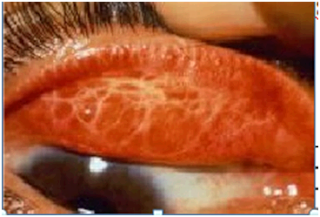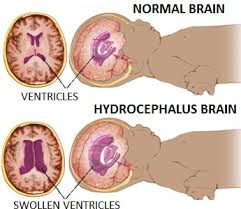Nursing Care Plan for Trachoma
Trachoma is the world's leading cause of preventable blindness and the second cause of blindness after cataract. Blindness from trachoma occurs after years of repeated infection with the microorganism, Chlamydia trachomatis. The process of infection and re-infection starts in early childhood and may continue to adulthood, if the cycle is not broken.
Women have a two to three times the rate of advanced trachoma and blindness than men, because as mothers, grandmothers and older sisters who care for children (the main source of active trachoma infection), they are redundant and are constantly exposed to bacteria.
Trachoma is caused by Chlamydia trachomatis and is spread through direct contact with the eyes, nose, and throat are exposed to liquid (containing bacteria) of people living with, or in contact with inanimate objects, such as towels and / or rags, which once contact is similar to the liquid , Flies can also be a route of transmission. If left untreated, repeated trachoma infection can result in entropion which is a form of permanent blindness and accompanied by pain if the eyelid turns inward, as this causes the eyelashes to scratch the cornea. Children are most susceptible to this infection because of their tendency to easily get dirty, but the effects of blurred vision and other more severe symptoms are often not felt until adulthood.
These bacteria have an incubation period of 5 to 12 days after a person experiences symptoms of conjunctivitis, or irritation similar to "pink eye." Endemic trachoma blindness is the result of several episodes of reinfection that produces continuous inflammation of the conjunctiva. Without reinfection, the inflammation will be gradually improved.
Inflammation of the conjunctiva is called "active trachoma" and usually seen in children, especially children of pre-school (elementary). It is characterized by white bumps on the bottom surface of the upper eye lid (conjunctival follicles or germinal centers of lymphoid). Non-specific inflammation and thickening often associated with papillae. Follicles may also appear at the junction of the cornea and sclera (limbal follicles). Active trachoma will often be irritating and have a watery fluid. Secondary bacterial infection may occur and cause a purulent discharge.
Further symptoms include:
Dirty discharge from the eyes - not tears (emissions or secretions containing mucus and pus from the eyes).
Swelling of the eyelids.
Trichiasis (turned eyelashes).
Swollen lymph nodes in the front of the ear.
The appearance of lines scarring of the cornea.
Complications in the ear, nose and throat.
The main complication is the most important or ulcers (sores / irritations) on the cornea due to a bacterial infection.
Nursing Diagnosis for Trachoma
Women have a two to three times the rate of advanced trachoma and blindness than men, because as mothers, grandmothers and older sisters who care for children (the main source of active trachoma infection), they are redundant and are constantly exposed to bacteria.
Trachoma is caused by Chlamydia trachomatis and is spread through direct contact with the eyes, nose, and throat are exposed to liquid (containing bacteria) of people living with, or in contact with inanimate objects, such as towels and / or rags, which once contact is similar to the liquid , Flies can also be a route of transmission. If left untreated, repeated trachoma infection can result in entropion which is a form of permanent blindness and accompanied by pain if the eyelid turns inward, as this causes the eyelashes to scratch the cornea. Children are most susceptible to this infection because of their tendency to easily get dirty, but the effects of blurred vision and other more severe symptoms are often not felt until adulthood.
These bacteria have an incubation period of 5 to 12 days after a person experiences symptoms of conjunctivitis, or irritation similar to "pink eye." Endemic trachoma blindness is the result of several episodes of reinfection that produces continuous inflammation of the conjunctiva. Without reinfection, the inflammation will be gradually improved.
Inflammation of the conjunctiva is called "active trachoma" and usually seen in children, especially children of pre-school (elementary). It is characterized by white bumps on the bottom surface of the upper eye lid (conjunctival follicles or germinal centers of lymphoid). Non-specific inflammation and thickening often associated with papillae. Follicles may also appear at the junction of the cornea and sclera (limbal follicles). Active trachoma will often be irritating and have a watery fluid. Secondary bacterial infection may occur and cause a purulent discharge.
Further symptoms include:
Dirty discharge from the eyes - not tears (emissions or secretions containing mucus and pus from the eyes).
Swelling of the eyelids.
Trichiasis (turned eyelashes).
Swollen lymph nodes in the front of the ear.
The appearance of lines scarring of the cornea.
Complications in the ear, nose and throat.
The main complication is the most important or ulcers (sores / irritations) on the cornea due to a bacterial infection.
Nursing Diagnosis for Trachoma
- Acute pain: eye related to swelling of the lymph nodes, photophobia and inflammation.
- Disturbed Sensory Perception: Visual related to damage to the cornea.
- Risk for infection, the spread related to lack of knowledge.
- Body image disorders related to loss of vision.


Komentar
Posting Komentar